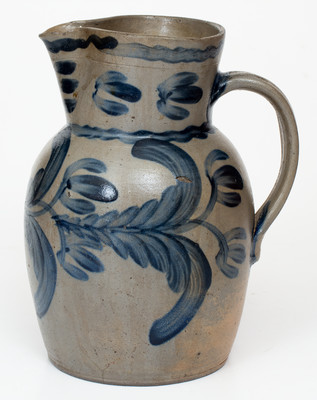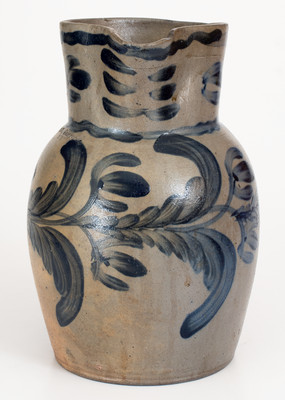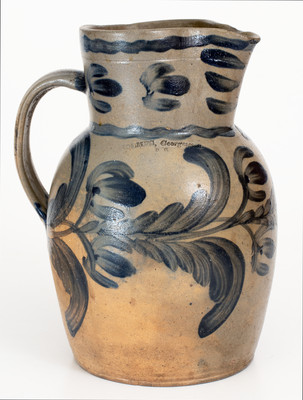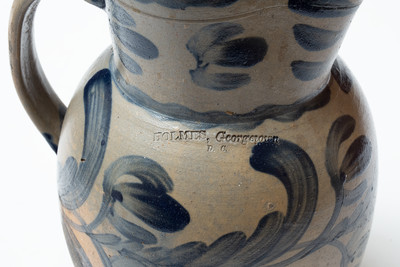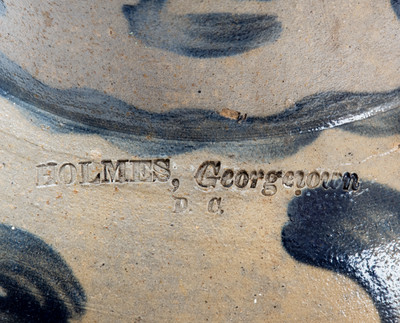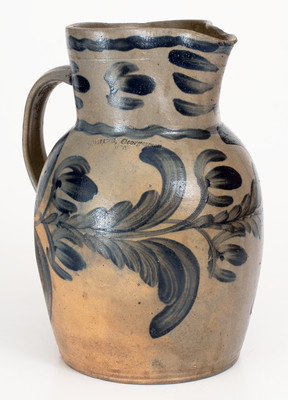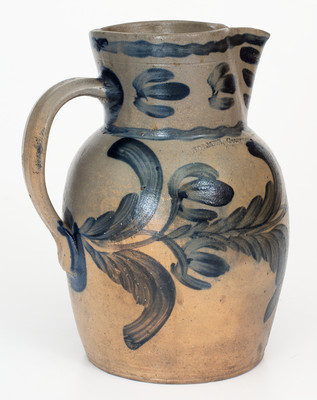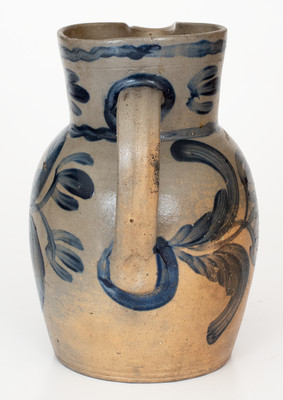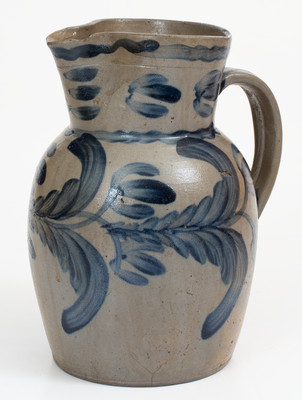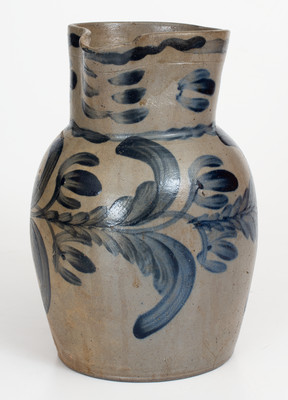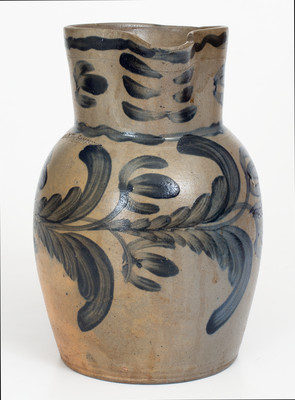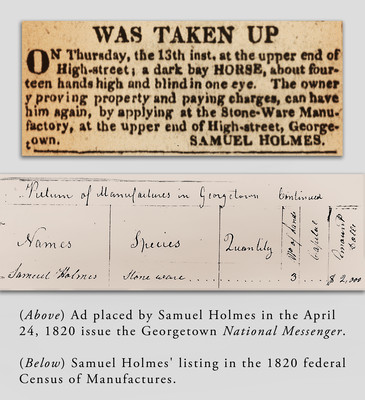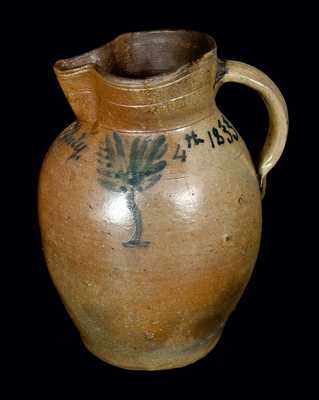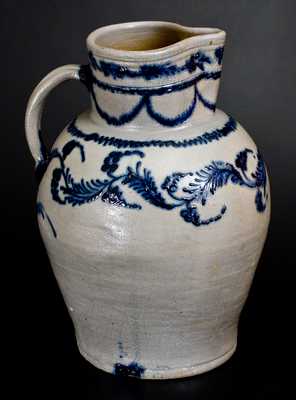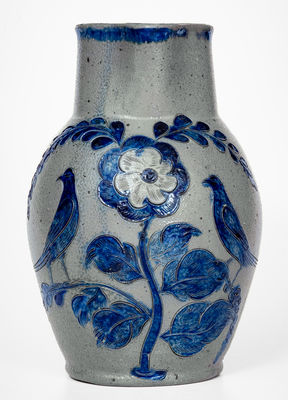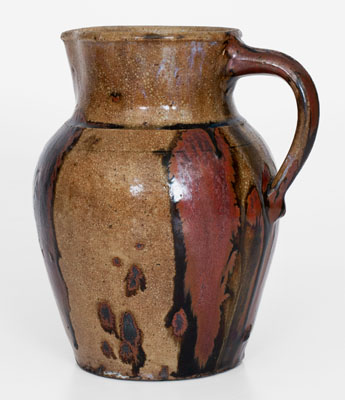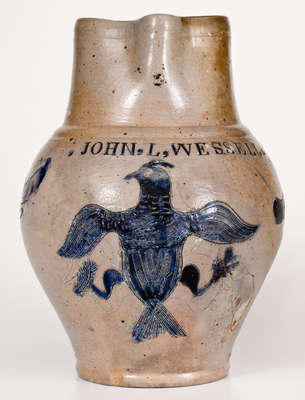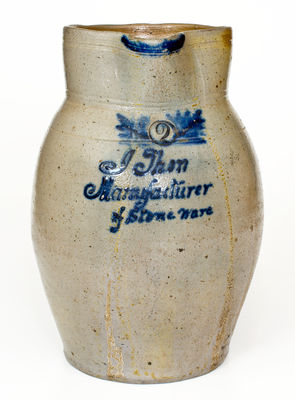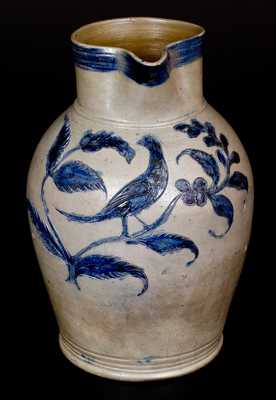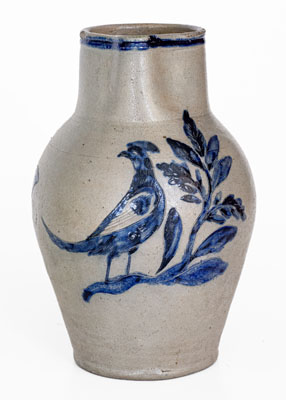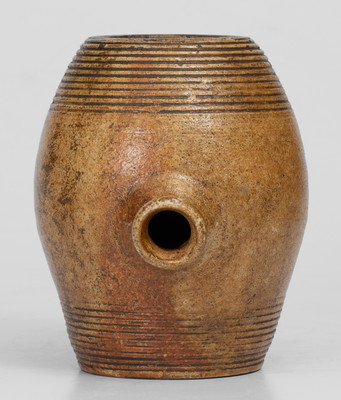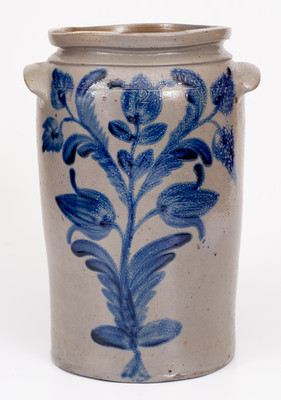Important and Unique One-Gallon Stoneware Pitcher with Elaborate Cobalt Floral Decoration, Stamped "HOLMES, Georgetown / D.C.," Samuel Holmes, circa 1820, thin-walled, ovoid pitcher with multi-beaded foot and flared collar, brush-decorated around its circumference with a stem bearing graduated leaves and crossing tulips. Collar decorated on each side with horizontal tulip blossoms and spout flanked by cobalt dashes, all between two wavy cobalt stripes. Cobalt highlights to handle terminals. This pitcher survives as the only documented work marked by Georgetown potter, Samuel Holmes. Previously undocumented by Washington, D.C. stoneware scholars, the existence of Holmes' shop is referenced in two period sources: An advertisement placed by Holmes in April 1820 issues of the Georgetown National Messenger announced that he had found "a dark bay HORSE, about fourteen hands high and blind in one eye" at his "Stone-Ware Manufactory," located "at the upper end of High-street" (now Wisconsin Avenue). The 1820 Census of Manufactures (a special census schedule documenting manufacturing operations) also lists Holmes' shop, noting that 3 hands were at work there producing $2000 worth of pottery annually. A rosetta stone of sorts, this pitcher provides a window into the first generation of stoneware production in today's District of Columbia--this being the earliest documented example produced there. (Richard Butt's well-known Washington stoneware manufactory did not open until about 1829.) In this case, Holmes was producing stoneware in a distinct Baltimore style highly reminiscent of the work of Baltimore potter Elisha Parr. This stands to reason, as Holmes had been bound as an apprentice to Baltimore earthenware potter William Moody in 1800, later appearing in an 1810 Baltimore city directory as a potter working among the local earthenware (and nascent stoneware) shops. As Holmes' involvement in the Baltimore stoneware craft dates to this extraordinarily early period, he may have served as one of the formative figures in transitioning locally-made ware into a more attractive, cobalt-decorated art form. Arguably the finest example of stoneware from today's District of Columbia known, and the only one bearing a Georgetown maker's mark. Provenance: Recently discovered in the basement of a Virginia home. A fork-shaped hairline across underside. A 1" Y-shaped line at base. A few other short, faint lines at base, possibly in-the-making. A small base chip. A shallow in-the-making spout chip, which was brushed over with cobalt by the potter. A shallow 3/4" in-the-making chip where spout meets rim. A minor in-the-firing ping to shoulder area. H 10 3/8".

